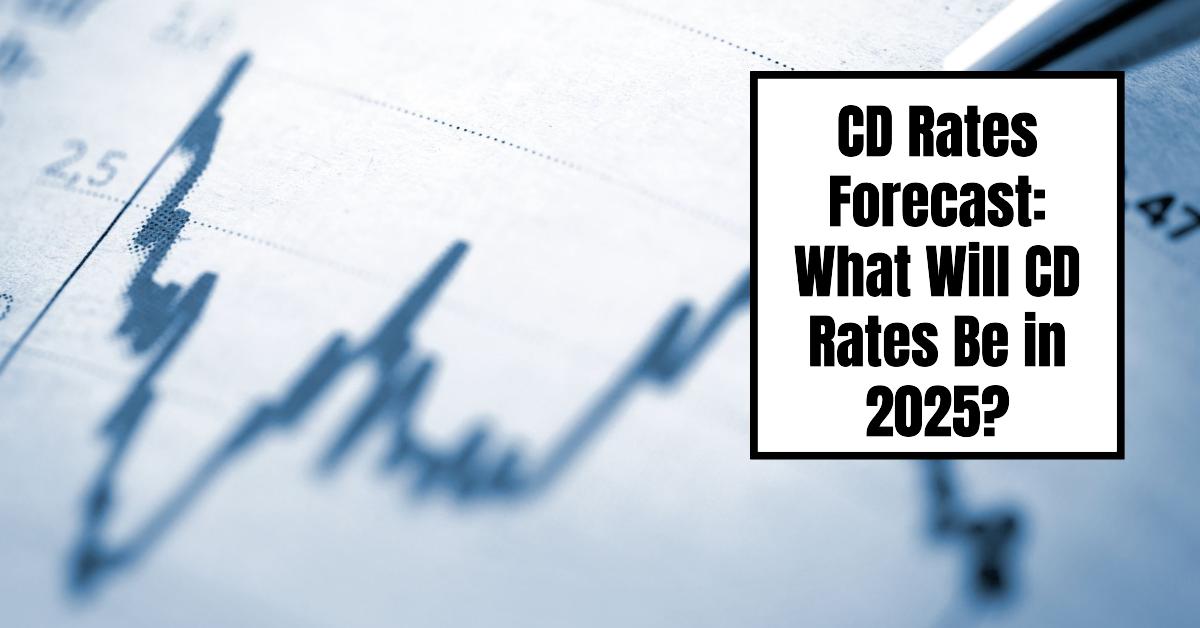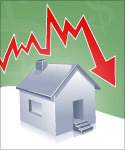Saving money can feel like trying to predict the weather – sometimes it’s sunny and your savings grow, and sometimes it’s cloudy and things feel a bit stagnant. If you're like me, you're always looking for the best way to make your hard-earned cash work harder for you. Certificates of Deposit, or CDs, are a popular choice for folks who like a safe and predictable way to save.
But, like the weather, CD rates aren't constant. So, what’s the scoop for the future? Let’s dive into the CD rates forecast for 2025 and figure out what you can expect and how to make smart choices with your savings.
In short, experts are predicting that CD rates in 2025 will likely go down from where they are now, but they should still be pretty good compared to what we’ve seen in recent history, possibly ranging between 3.5% to 4.5% by the end of the year.
CD Rates Forecast 2025: Will Your Savings Grow?
Why Are CD Rates Always Changing Anyway?
To really get a handle on where CD rates are headed, it helps to understand what makes them tick in the first place. It's not some magical formula hidden in a bank vault! Think of it like this: banks are businesses, and they need money to lend out. CDs are one way they get that money from us, the savers. The interest rate they offer on CDs is like the price they're willing to pay for using our money for a set period.
The biggest player calling the shots here is the Federal Reserve, or “the Fed” as it’s often called. They’re like the central bank of the United States, and one of their main jobs is to keep prices stable – basically, to control inflation. They do this by tweaking something called the federal funds rate. Right now, in March 2025, this rate is hovering between 4.25% and 4.50%. This rate is essentially what banks charge each other to borrow money overnight.
Now, you might be thinking, “What does this have to do with my CD?” Well, CD rates tend to follow the Fed rate pretty closely. When the Fed raises its rate to fight inflation (making borrowing more expensive), banks usually raise CD rates to attract more deposits (making saving more attractive). And when the Fed cuts rates to boost the economy (making borrowing cheaper), CD rates tend to fall.
But it's not just the Fed. Banks also look at a few other things when setting CD rates:
- Competition: If lots of banks are trying to attract savers, they might offer slightly better rates to stand out from the crowd. Think of online banks – they often have to offer higher rates because they don't have fancy branches to lure you in!
- Bank's Own Needs: Sometimes a bank needs more deposits, maybe because they're planning to make a lot of loans. In that case, they might bump up CD rates to get people to deposit more money.
- The Economy: Overall economic conditions, like how people are feeling about the future and how much borrowing is going on, can also play a role.
Looking Back to See Forward: A Quick History of CD Rates
To get a better idea of what might happen in 2025, it's helpful to take a quick peek at history. CD rates haven’t always been in the 4% or 5% range we see today. In fact, they’ve been on a wild ride over the years.
Back in the early 1980s, when inflation was a real monster, CD rates were sky-high. Can you imagine getting 18% on a 3-month CD? That was the average back then! The Fed, led by Paul Volcker, was aggressively raising rates to beat inflation, and CD rates followed suit.
Then, as the economy changed and inflation came under control, CD rates started to come down. By the early 2000s, rates were much lower. And after the financial crisis of 2008, when the Fed slashed rates to near zero to help the economy recover, CD rates plummeted. For years, savers were stuck with really low rates, sometimes less than 1%!
But things started to change again in 2022 and 2023. Inflation came roaring back, and the Fed started raising rates again, eleven times in a short period! This pushed CD rates back up, and by 2024 and into 2025, we’ve seen some of the best CD rates in years, with some terms hitting around 5% or even a bit higher.
This history lesson shows us a pretty clear pattern: CD rates generally follow what the Fed is doing with interest rates. When the Fed raises, CD rates tend to rise; when the Fed cuts, CD rates usually fall.
The 2025 Crystal Ball: Forecasting CD Rates
Okay, so now we get to the big question: what’s likely to happen to CD rates in 2025? Based on what experts are saying, and how the economy is looking right now, it seems like CD rates are expected to decrease throughout 2025.
Why the drop? Well, the main reason is that the Fed is expected to start cutting interest rates in 2025. The thinking is that inflation is starting to cool down, and the Fed will want to gently nudge the economy to keep it growing. Most predictions suggest we could see two or three rate cuts from the Fed in 2025, each by about 0.25%.
If the Fed cuts rates, CD rates are very likely to follow suit. However, it's important to keep in mind that even with these expected cuts, CD rates in 2025 are still predicted to be better than average compared to the really low rates of the past decade. We're not going back to near-zero territory anytime soon, thankfully!
Here’s a possible range of CD rates you might see by the end of 2025, depending on the term of the CD:
| Term | Forecasted Rate Range (End of 2025) |
|---|---|
| 6 months | 4.00% – 4.25% |
| 1 year | 4.25% – 4.50% |
| 2 years | 4.00% – 4.25% |
| 3 years | 3.75% – 4.00% |
| 5 years | 3.50% – 3.75% |
Keep in mind these are just forecasts, and the actual rates could be a bit higher or lower. Economic conditions can change, and the Fed could adjust its plans. But this gives you a reasonable idea of what to expect.
You might notice something interesting in this table: shorter-term CDs might have slightly higher rates than longer-term ones. This is what's called an inverted yield curve, and it can happen when people expect interest rates to fall in the future. Banks might be willing to pay a bit more for short-term money if they think rates will be lower later on.
Beyond the Fed: Other Things That Could Shake Up CD Rates
While the Fed is the biggest influence on CD rates, there are a few other factors that could throw a curveball in 2025:
- Inflation Surprises: If inflation doesn't cool down as much as expected, or if it starts to creep back up, the Fed might have to be more cautious about cutting rates, or even raise them again. This could keep CD rates higher than currently predicted.
- Economic Growth Slowdown: If the economy slows down more sharply than expected, the Fed might cut rates more aggressively to try to prevent a recession. This could lead to faster drops in CD rates.
- Bank Competition Heats Up: If banks get really competitive for deposits, they might try to attract savers by offering slightly higher CD rates, even if the Fed is cutting rates. This could soften the decline in CD rates.
- Global Events: Things happening around the world, like political instability or changes in global trade, can also indirectly affect interest rates and CD rates in the US. It’s hard to predict these “black swan” events, but they can definitely have an impact.
So, What Should Savers Like You and Me Do?
Knowing what might happen is helpful, but what should you actually do with this information? Here’s my take, based on what I’m seeing:
- Consider Locking in Rates Now: Since rates are expected to go down, if you find a good CD rate now (around 5% for some terms as of March 2025), it might be smart to lock it in. This way, you can secure that higher rate for the term of the CD, even if rates fall later in 2025. Think of it like catching the high tide before it goes out.
- Shop Around for the Best Rates: Don’t just settle for the first CD rate you see at your local bank. Rates can vary a lot between different banks and credit unions. Online banks and credit unions often offer the best rates because they have lower overhead costs. It’s worth spending a little time comparing rates online – you could earn significantly more over the term of your CD.
- Think About Different CD Terms: With rates potentially falling, longer-term CDs might seem less attractive if you think rates could go up again later. However, if you value certainty and want to lock in a decent rate for a longer period, a 2-year, 3-year, or even 5-year CD might still be a good option. On the other hand, if you think rates will fall and then stabilize, shorter-term CDs (6 months or 1 year) could give you flexibility to reinvest at potentially better rates later on – but remember, this is all speculation!
- Don't Forget Your Emergency Fund: Before you lock up a bunch of money in CDs, make sure you have a solid emergency fund in a highly liquid account, like a savings account or money market account. You want to be able to access cash quickly if unexpected expenses pop up, without having to pay penalties for early CD withdrawals. CDs are great for money you know you won’t need for a while.
- Look Beyond National Averages: The average CD rates you see quoted are just that – averages. You can often find much better rates if you do a little digging and look at specific banks and credit unions, especially online ones. And sometimes, regional credit unions offer really competitive rates if you qualify for membership based on where you live or work.
A Little Something Extra: Regional Rate Differences
Here's a detail I find interesting: CD rates aren't always the same across the whole country. You might find that credit unions in certain regions, especially smaller, community-focused ones, sometimes offer surprisingly good rates to attract local deposits. This is because they are really focused on serving their local members. It’s a good reminder that sometimes the best deals are closer to home than you think, and it pays to explore options beyond the big national banks.
The Bottom Line: Plan Ahead, Stay Savvy
So, to wrap it all up, the CD rates forecast for 2025 points towards a likely decrease in rates as the year goes on, mainly because the Fed is expected to cut interest rates. While rates might come down, they are still projected to be quite reasonable compared to the ultra-low rate era we’ve experienced in the past.
For savers, the key takeaway is to consider your options now and think about locking in current rates if you find a good deal that fits your financial goals. Remember to shop around, compare terms, and always keep your emergency fund in mind. By staying informed and proactive, you can make smart savings choices and help your money grow, no matter what the economic weather brings in 2025!
Recommended Read:
- What Will CD Rates Be in 2026: Insights and Predictions
- Are CDs Considered Safe if the Market Crashes?
- How Often Do CD Rates Change: Factors Influencing CD Rates
- Will CD Rates Go Down with Anticipated Fed Rate Cuts in 2024?
- When Will CD Rates Go Up Again: CD Rates Forecast 2024
- Interest Rate Predictions for the Next 3 Years: (2024-2026)
- Interest Rate Predictions for Next 2 Years: Expert Forecast
- Interest Rate Predictions for Next 10 Years: Long-Term Outlook




